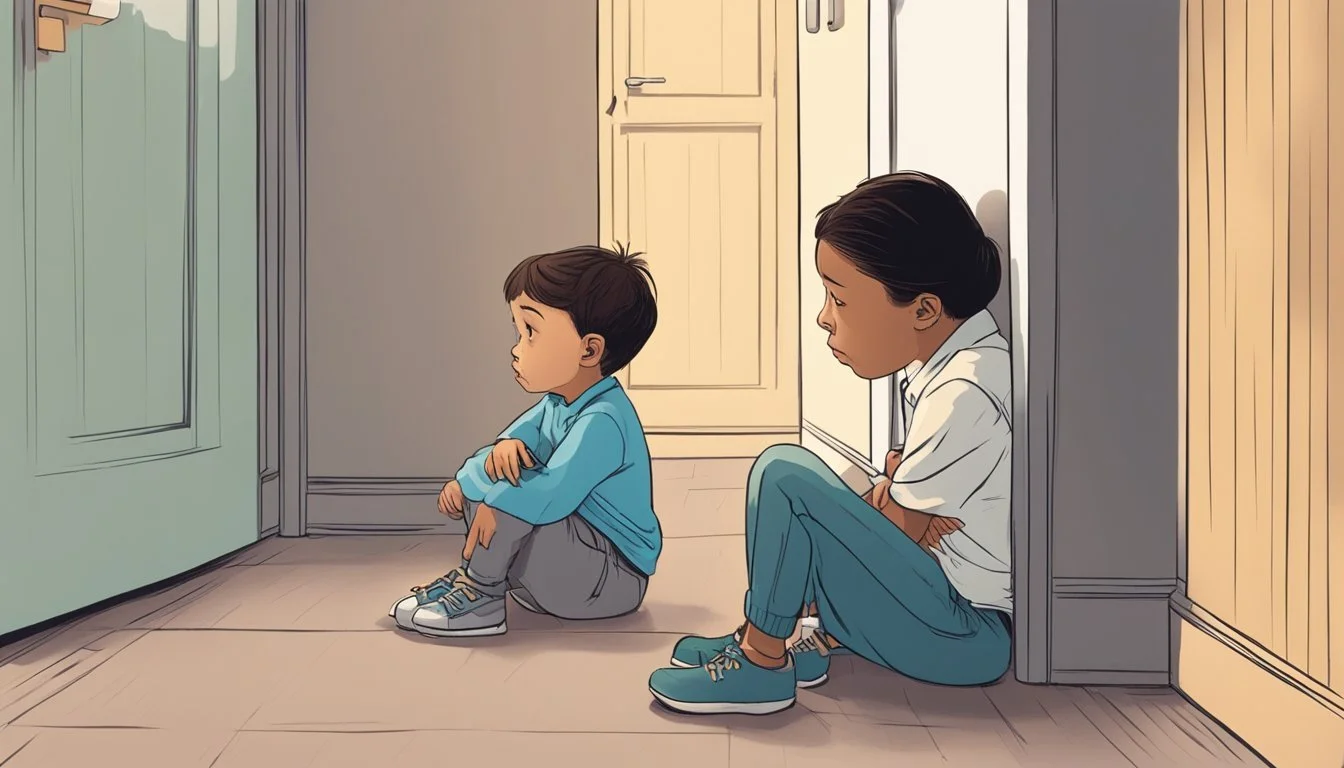5 Types of Trauma That Can Occur Within the Family System
Identifying and Understanding Family Dynamics
Understanding the complexities and dynamics of family systems is crucial when discussing different types of trauma. Families often face various stressors and challenges that can lead to traumatic experiences affecting every member differently. Each family member's response to trauma can significantly impact the entire family's emotional and psychological well-being.
Trauma within the family system can manifest in numerous forms, altering daily interactions and relationships. Recognizing these traumatic events and their effects is essential for fostering a supportive environment and promoting healing. This article aims to highlight five specific types of trauma that can emerge within family systems, providing insight and understanding for those seeking to navigate these challenging experiences.
1) Emotional Neglect
Emotional neglect involves a parent's failure to respond adequately to a child's emotional needs. This can be both intentional and unintentional. Some parents may consciously dismiss or invalidate their child's feelings, while others might overlook the importance of emotional connection despite their love and care.
Children subjected to emotional neglect often struggle with forming healthy relationships later in life. They might find it challenging to identify and express their own emotions. This can lead to low self-esteem and an ongoing sense of emptiness.
In an emotionally neglectful family, much goes unsaid or unnoticed. Members of these families suffer from a lack of emotional validation and support, which can lead to deep feelings of isolation.
Signs of emotional neglect in children include social withdrawal, lack of confidence, and difficulty identifying their emotions. As adults, these individuals might engage in self-sabotaging behaviors or have trouble connecting with others. Therapy can be beneficial, helping them learn to recognize and process their emotions more healthily.
2) Verbal Abuse
Verbal abuse within a family system can cause deep emotional scars. This type of trauma involves the use of language to demean, belittle, or control another person. Frequent criticism, threats, and shaming are common techniques used.
Verbal abuse often disguises itself as jokes or sarcastic comments. This makes it difficult for the victim to recognize and defend against it.
Long-term verbal abuse can lead to anxiety, depression, and low self-esteem. Over time, the victim may start to believe the negative messages, impacting their mental well-being.
In some cases, verbal abuse can escalate to other forms of abuse. It creates a toxic environment where emotional safety is compromised. Children and spouses are particularly vulnerable.
Recognizing the signs of verbal abuse is crucial for intervention. Addressing it early can prevent further psychological damage and break the cycle of abuse.
Isolation and silence often accompany verbal abuse, making it necessary for friends and family to offer support. Encouraging open communication can help victims seek the help they need.
3) Physical Abuse
Physical abuse is a significant issue within the family system. It involves any act by a caregiver that results in physical injury to a child. Injuries can include red marks, welts, bruises, muscle sprains, or broken bones. This form of abuse is one of the most common types of child maltreatment.
Legal definitions of physical abuse can vary across regions. Despite this, the core aspect remains the same: a harmful physical action towards a child. Physical abuse can happen through hitting, shaking, or kicking. These actions inflict immediate and sometimes severe physical harm.
The impact of physical abuse extends beyond visible injuries. Children may develop long-term emotional and psychological issues. Fear, anxiety, and distrust are common emotional responses. The trauma can affect the child throughout their life, influencing their mental health and relationships.
Recognizing physical abuse involves looking for signs like unexplained injuries or frequent absences from school. It’s essential for teachers, doctors, and community members to remain vigilant. Early intervention can help prevent further harm and support the child’s recovery.
For more detailed information about physical abuse, refer to resources provided by the National Child Traumatic Stress Network.
4) Sexual Abuse
Sexual abuse within the family system is a deeply traumatic experience for survivors. It can take many forms, including non-consensual touching, fondling, physical restraint, kissing, and more serious violations. The impact on a child's development and sense of safety is profound.
Survivors of sexual abuse by a family member often struggle with issues of trust and self-esteem. They may also experience emotional and psychological problems such as depression, anxiety, and post-traumatic stress disorder (PTSD).
Triggers for trauma responses can occur unexpectedly. Survivors may face difficulties in maintaining healthy relationships. The support from a positive community can be crucial in the healing process, helping individuals manage the effects of their trauma.
The trauma is not only emotional but can also manifest in physical symptoms like headaches, difficulty sleeping, and hyperarousal, where the body remains in a constant state of fear response. Hyperarousal can lead to chronic stress and other health issues.
Creating a safe environment is critical for helping survivors disclose their experiences and begin their recovery journey. Understanding family dynamics and ensuring a supportive space can make a significant difference in a survivor's healing process. More insights can be found at RAINN.
5) Parental Substance Abuse
Parental substance abuse significantly impacts family dynamics. This often leads to emotional chaos and disrupted attachment. Children may experience instability and insecurity, which can manifest as low self-esteem and anxiety.
Families dealing with substance use disorders often struggle with secrecy and conflict. This unhealthy environment can hinder children's normal development and social interactions.
Parental substance abuse frequently causes role reversal. Children might take on caregiving responsibilities or act as mediators in conflicts. This dynamic can interfere with their own growth and emotional well-being.
Financial instability is another common issue in families facing substance abuse. The resources for basic needs, education, and extracurricular activities can become limited. This adds to the stress and challenges faced by each family member.
More details on the effects of parental substance abuse can be found at NCBI and AAETS.
Understanding Family Trauma
Family trauma can profoundly impact both individual members and the family unit as a whole. Key areas include the definition and scope of family trauma, as well as the most common causes leading to these traumatic experiences.
Definition and Scope
Family trauma refers to distressing experiences that affect family dynamics and individual well-being. This can range from sudden events like accidents to prolonged issues such as financial strain.
Trauma affects family members emotionally, mentally, and sometimes physically. The collective experience of trauma can disrupt daily routines, communication, and relationships within the family.
Trauma in families may alter how members interact with each other, often increasing stress, anxiety, and feelings of helplessness. Each family member’s reaction to trauma can vary, causing further complications in maintaining familial harmony.
Common Causes
Common causes of family trauma include various life-altering events. Natural disasters like hurricanes or earthquakes can displace families, leading to significant emotional and logistical challenges.
Abuse, whether physical, emotional, or sexual, within the family unit leads to long-term psychological harm. Families dealing with substance abuse issues often face constant instability and distress.
Additionally, sudden loss of a family member through death or separation can deeply affect the remaining family members. Chronic illness, both physical and mental, places ongoing stress on families, disrupting relationships and everyday functioning.
Economic hardship, such as job loss or poverty, can lead to chronic stress, impacting both parents and children emotionally and mentally.
Emotional Impact of Family Trauma
Family trauma can significantly alter the emotional landscape of those involved. Both short-term and long-term effects can emerge, often affecting individuals' mental health, behavior, and relationships.
Short-Term Effects
Immediately after a traumatic event, individuals may face intense emotional reactions such as fear, anger, and confusion. Children might display changes in behavior, becoming clingier or more withdrawn.
Sleep disturbances like nightmares or insomnia are common. Concentration issues and declining academic performance may also occur. Physical symptoms such as headaches and stomachaches are often observed without any apparent medical cause.
Heightened vigilance and anxiety can make daily activities challenging. Trust in family members may erode, leading to increased conflicts or avoidance behaviors. In younger children, regression to earlier developmental stages, such as bed-wetting or thumb-sucking, might be seen.
Long-Term Consequences
Over an extended period, untreated family trauma can lead to chronic emotional challenges. Depression and anxiety disorders are prevalent. Children might develop attachment issues, struggling with forming or maintaining relationships.
Behavioral problems, including aggression and substance abuse, can arise as coping mechanisms. Academic underachievement may persist, reducing future opportunities.
One of the most severe impacts is Post-Traumatic Stress Disorder (PTSD), characterized by flashbacks, severe anxiety, and intrusive thoughts. Adults and children alike can exhibit emotional numbing, becoming detached from their feelings and those around them.
In some cases, trauma can cascade through generations, known as intergenerational trauma. This can create a cycle of emotional and behavioral issues that are perpetuated within the family system, complicating healing and recovery efforts.
Coping Mechanisms and Support
Effective coping mechanisms and supportive resources are essential in helping individuals navigate the complexities of family trauma. Therapeutic interventions and community resources are pivotal in offering the necessary assistance.
Therapeutic Interventions
Professional Therapy: Engaging with licensed therapists can provide tailored strategies to address specific trauma-related issues. Cognitive-Behavioral Therapy (CBT) and Eye Movement Desensitization and Reprocessing (EMDR) are particularly effective for trauma.
Family Counseling: This approach helps families understand and address the dynamics that contribute to trauma. By fostering open communication, members can work together to heal and support each other.
Mindfulness and Stress-Reduction Techniques: Practices such as meditation, yoga, and deep-breathing exercises can alleviate stress and improve emotional regulation, offering significant benefits to those dealing with trauma.
Support Groups: Participating in support groups where individuals can share experiences and coping strategies with others who have similar experiences can foster a sense of community and reduce feelings of isolation.
Community Resources
Non-Profit Organizations: Many organizations offer free or low-cost counseling services, workshops, and support groups focused on trauma recovery. Look for local chapters of national organizations dedicated to mental health.
Crisis Hotlines: Immediate support is available through crisis hotlines, providing access to trained counselors who can offer guidance and resources.
Community Centers: Local community centers may host events, workshops, and classes for stress management and emotional well-being.
Educational Programs: Educational resources, including books, online courses, and seminars, can empower individuals with knowledge and techniques for handling trauma.
Accessing these resources can significantly enhance the support network for those dealing with family trauma, providing practical tools and community connections to aid in recovery.



